en ja es pt
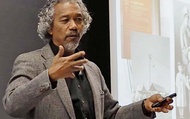
identity
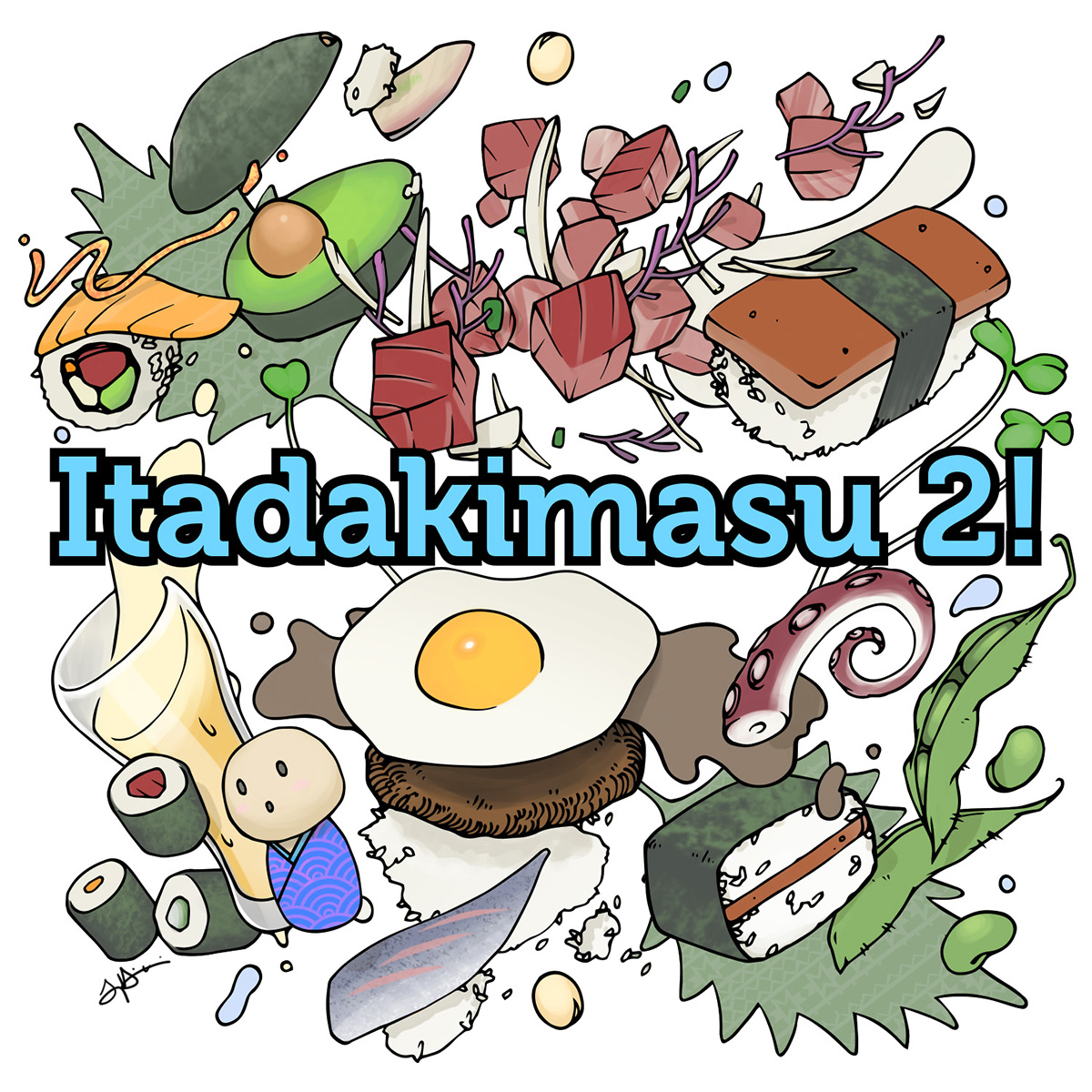
How does the food you eat express your identity? How does food help to connect your community and bring people together? What kinds of recipes have been passed down from generation to generation in your family? Itadakimasu 2! Another Taste of Nikkei Culture revisited the role of food in Nikkei culture.
We solicited stories from May to September of 2017, and voting closed on October 31, 2017. The 22 stories (9 English; 2 Japanese; 4 Spanish; and 7 Portuguese) were received from the United States, Brazil, Canada, and Peru.
Thank you very much to everyone who submitted their Itadakimasu 2! stories!
For this series, we asked our Nima-kai community to vote for their favorite stories and an editorial committee to pick their favorites. In total, five favorite stories were selected.
Here are their favorites!!
English | Japanese | Spanish | Portuguese
English:
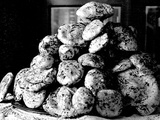
Matsutake Sukiyaki
By Susan Yamamura
Comment from Nancy Matsumoto
The many varieties of Nikkei history, family life, and foodways evoked in Itadakimasu 2! made each essay a pleasure to read, and a “favorite” hard to pick. What stood out about Susan Yamamura’s Matsutake Sukiyaki, though, was how, in simple, direct and affecting language, she expresses her deep love for departed family members while recalling a long-ago mushroom hunt and family dinner.
There’s an understated humor to her account of the seriousness and secrecy of the matsutake hunt (even her husband-to-be is not to be trusted with knowledge of top-secret family hunting sites!). In the evocative final campground cooking scene, her mother joyfully assembles the matsutake sukiyaki dinner. We’re so immersed in the story that it almost comes as a surprise when the camera pulls back and the narrator reminds us that the dinner could not be recreated today because many of its “ingredients” no longer exist. What has seemed so real, to the narrator and to us, is in fact a precious childhood memory, “burnished to a golden and rosy glow.”
Comment from Soji Kashiwagi
As a Japanese American, I’ve seen matsutake being sold in J-Town supermarkets for prices way beyond what I could afford. I’ve heard about JA families going out to remote and secret locations up in the mountains in search of “mushroom gold.” But I’ve never truly experienced the hunt for matsutake until Susan Yamamura took me to the Cascade Mountains of Washington state in her story, Matsutake Sukiyaki. This uniquely JA journey she took me on—from the family planning, to reaching the family’s “secret spot,” to her description of the beautiful scenery—was everything I could ask for. But what brought this story home for me was the family’s return to their campsite and her mother’s careful and loving preparation of the matsutake sukiyaki. With her mom, dad, sister, and grandparents around the table, it was definitely a meal to remember and savor for the ages. My only hope is that Susan makes matsutake sukiyaki once again—and passes on the matsutake-hunting tradition, the flavors and her delicious story on to members of her own family, so that future generations will know and be able to savor the taste of what it means to be Japanese American.
Japanese:
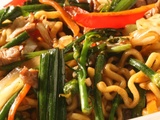
Taking Pride in Spreading Yakisoba From Suzano to the Rest of Brazil – Tie-up of Noddle-making Facility and Bunkyo
By Kohei Ohsawa
Comment from Shigeru Kojima
I read the two essays submitted for Itadakimasu 2! Although there were only two submissions, both from Brazil, their stories were both intriguing in a way that explored the Nikkei community, and I had a hard time deciding which was better. One essay reported the root of yakisoba, while the other was about the popular Brazilian dish feijoada and prefectural association. Because the former focused more closely on the theme “Taste of Nikkei Food Culture,” I chose Kohei Ohsawa’s Taking Pride in Spreading Yakisoba From Suzano to the Rest of Brazil – the Tie-up of a Noodle-making Facility and Cultural Associations as my favorite.
The story reports how the Japanese yakisoba noodle spread across Brazil as “YAKISOBA,” exactly as it is in Japanese, with detailed reporting on the cultural association and women’s association in Suzano as well as a noodle-making facility. At the same time that I understood its background story, I remembered that there was a theory stating yakisoba was first introduced in the eastern city of São Paulo by Chinese people. It’s difficult to pinpoint the origin with objective evidence, as every origin tends to have different stories, yet this reporting could be the proof of the theory that it did indeed start in Suzano.
Masayuki Fukasawa’s essay on feijoada and kenjinkai is also thought-provoking, helping us understand the relationship between food and Nikkei people. There is the “feijoada” (national dish in Brazil) gathering that has been held for over ten years as a traditional event of the Brazilian Okayama Kenjinkai. Together with its appeal – we cook it for just a while to remove oil and then stew it enough to get the flavor with adding just a bit of salt – their statement is important when reflecting on the tradition and change of Nikkei food culture.
I need to see how yakisoba and feijoada evolve from now. I will continue to taste them with the interest that they deserve.
Spanish:
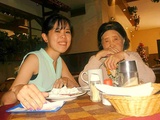
Hard Times for Mother, Good Memories for Me
By Milagros Tsukayama Shinzato
Comment from Enrique Higa
Sometimes food acts as a time machine, like when a dish transports us back to childhood, to that time when our mother’s food was the best in the world, and every dish was not only meant to fill our stomachs but an expression of the affection of a mother who put all of her love into everything she made for us.
The article by Milagros Tsukayama is a heartfelt tribute to her mother, on that any one of us can identify with. She succeeds, in a certain way, in making us feel as if her story is our own. Her mother’s unconditional dedication and silent abnegation, her efforts to provide the best to her daughter, are a mirror in which many of us see the image of our own mothers reflected.
This identification also extends to food; specifically to Japanese food. As the author says, these days it is easy to find Japanese (or Nikkei) food in Lima; you can eat it every day if you like. When we were children, however, Japanese food was reserved for special occasions (two or three times a year), and each occasion was anxiously awaited, because the sushi, kamaboko or mochi made by your oba (grandma), your aunts or your mother were reason enough for celebration.
Portuguese:
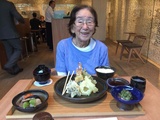
A Precious … and Delicious Legacy
By Katsuo Higuchi
Comment from Laura Hasegawa
I had the task of evaluating the Portuguese-language contributions to Itadakimasu 2! A Taste of Nikkei Culture, something we found very enjoyable. The topic of all seven stories is the food culture of Brazilian Nikkei, which is discussed in a clear and very interesting manner; in their vast majority, the stories focus on traditional Japanese cuisine passed on by mothers and grandmothers. At the same time, these stories put forth instances that show in a picturesque manner the influence of Brazil's food culture on the tables of Nikkei families.
My top choice was Katsuo Higuchi’s story A Precious ... and Delicious Legacy, a moving account about Ms. Aiko, whose cooking skills are described in detail. Starting with simple, everyday dishes and going all the way to the botamochi made with so much care, as the reading progresses our heart overflows with love for this little lady. Katsuo Higuchi has paid a unique homage to his 96-year-old mother.
We should also highlight another chronicle, one with a different focus from the others: Chico Pascoal’s It happened at the Misuzu Restaurant. Honto Ni! Located in the well-known Asian neighborhood of Liberdade, the Misuzu Restaurant served yakimeshi and yakizakana, misoshiru and beer. But it had something else that made it unique: the restaurant opened only after 10 p.m.; it was thus the meeting spot of the city of São Paulo’s bohemian crowd from 1980 to 1990.
We have closed submissions for this series, but you can still share your story on Discover Nikkei. Please check our Journal submission guidelines to share your story!
We're deeply grateful for the participation of our Editorial Committee:
Thanks to Jay Horinouchi for designing our Itadakimasu 2! logo, and our wonderful volunteers and partners who help us review, edit, upload, and promote this project!
Disclaimer: By submitting your story, you are granting Discover Nikkei and the Japanese American National Museum permission to post your article and images on DiscoverNikkei.org, and potentially other publications in print or online affiliated with this project. This includes any translations of your work in association with Discover Nikkei. You, the writer, will retain copyright. Check Discover Nikkei’s Terms of Services and Privacy Policy for more details.